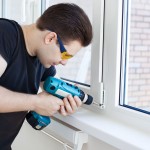Prototyping is a common and very useful means of discovering a new product’s efficiencies and deficiencies while in development. The practice allows for greater iteration and a more direct application of resources without the time and expense of systematized production runs.
The Advent of 3D Printing
3D printing has its pros and cons. While the process has grown in popularity for its ability to quickly and accurately produce test articles, it still has limitations in terms of available finishes and materials. Prototype machining, on the other hand, can produce test items in the final material, permitting more direct physical testing.
Designing and Engineering
Experienced prototype machining services can assist product developers at any stage, from an initial idea or drawing to a completed design ready for machining.
They will answer questions and provide helpful suggestions regarding cost or weight reduction, function improvement and more. They’ll also act as engineers who take concepts to production-ready models and drawings through such applications as AutoCAD, Catia and GibbsCAM.
Machining Services
While prototyping is a cost-saving measure, prototype machining services will nevertheless put in place all processes, fixtures, programs or inspection documents that would be required in a full production run. This approach ensures parts of consistent and matching quality while minimizing run-up times and facilitating seamless transitions to full production.
Prototyping for Multiple Industries
Prototyping services with decades of experience in the business can bring prototyped concepts to viable products for multiple industries, including agriculture, packaging or aviation.
Whether the product is steel, plastic, aluminum or stainless, state-of-the-industry machining processes like turning, 3D milling, threading or boring can realize solutions.





